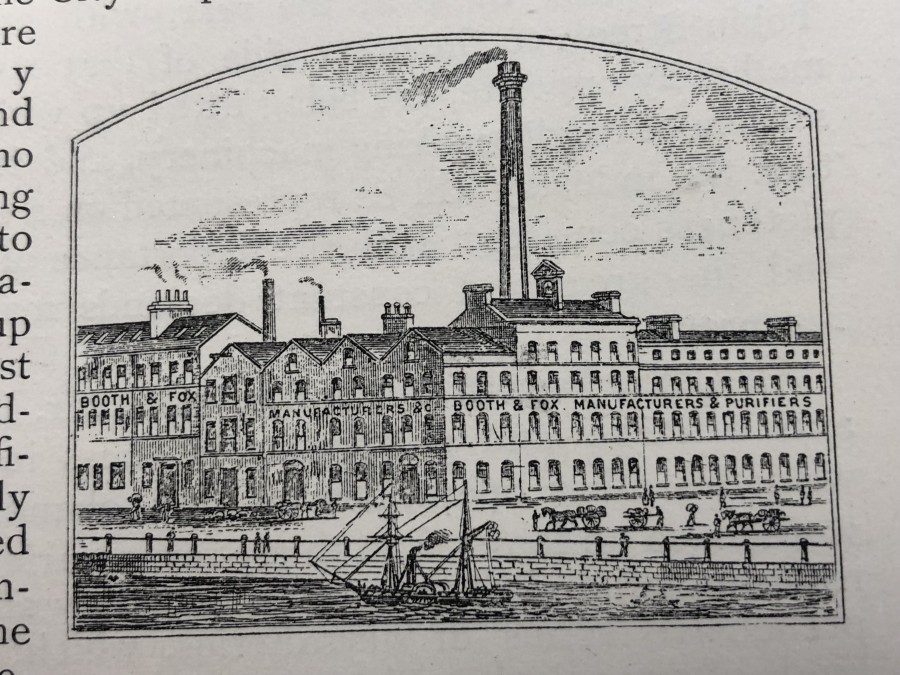
Kieran’s Our City, Our Town Article,
Cork Independent, 28 March 2019
Tales from 1919: The Booth and Fox Empire
On 25 March 1919 an outbreak of fire was discovered in what was known as the drying chamber in the establishment of Messrs Booth and Foxes, Feather Merchants – a premises, which spanned Lavitt’s Quay and Emmett Place. The discovery was made by an employee of the firm who was engaged with others on the premises at the time, and he immediately gave the alarm. All the “hands” then set themselves the task of fighting the fire, and the Fire Brigade at Sullivan’s Quay station were telephoned for from Cork Opera House. The staff of the Opera House led by Mr Pitt, the manager, formed into a willing band of helpers. Water was poured on the burning chamber, in which was stored a quantity of jute – a very flammable material. This work executed by the combined staffs of Messrs Booth and Fox and the Cork Opera House under the able guidance of Captain Hudson of the Fire Brigade, who chanced to be on the scene when the alarm was given, limited the damage from the outset.
Founded in 1825, Messrs Booth & Fox was one of the oldest businesses in the City being founded by John Peter booth and John Fox. The original Booth and Fox acquired their first site in much the same position as the 1919 factory occupied. Within a comparatively short span of years they became owners of practically the entire block of the property, which is today bounded by Emmett Place, Lavitt’s Quay, Perry Street and including the private dwellings onto Drawbridge Street.
When the company began operation, it was chiefly interested in the collection and manual grading of feathers. The manufacture of down quilts and bedding generally came later. The down quilt was patented by the firm in 1841. In 1867 a royal patent was received for the processing of horse hair and similar material. Horsehair and like materials had been used for stuffing couches and cushions. Booth and Fox’s first sewing machines were very large and three men were required to operate each one – the motive power being supplied by a belt drive.
Messrs Booth and Fox were able to command a world market for their goods manufactured in Cork. Agencies were established in South Africa (Cape Town), Australia (Sydney and Melbourne). South America (Buenos Aires) as well as nearer home – Dublin, Belfast and Glasgow, while another factory was started by the firm in Manchester.
An account in 1892 by publishers Stratten and Stratten called Dublin, Cork and South of Ireland: A Literary, Commercial, and Social Review described an extensive operation. The premises in Cork comprised a very fine and spacious block of buildings of varying elevations and comprised one of the most prominent architectural features of the City. Apart from its well-designed exterior, the works were equipped with no expense being spared to bring the establishment up to the highest possible standard of efficiency. Three hundred people were employed in the various departments and during the busiest season of the year, the number of employees increased.
In the Stratten and Stratten publication, the special feature of the firm’s operations was the manufacture of eider-down quilts. They were known for their “economy, lightness, warmth, durability, beauty, and purity” and were said to be unrivalled in the market. Messrs Booth & Fox were also extensive manufacturers of Victorian ladies’ down underskirts, the advantages of which mainly consisted in the fact that they respectively weighed from 18 to 24 ounces. They were as soft as cushions and could be washed with the “down inside as readily as a quilt”.
The firm’s successes at the various international Exhibitions in the latter half of the nineteenth century indicated the superiority of their goods over rival houses – from the great London Exhibition in 1862 to Dublin in 1865, Cork in 1883, Melbourne in 1881 and Dublin in 1882.
In 1892, the firm had a very large and influential connection in all parts of the world. At 81, Hatton Garden (London), and Piccadilly (Manchester) Messrs Booth & Fox had extensive branch establishments.
The managing director who oversaw the rebuilding after the fire in March in 1919 was Mr Herbert Charles Fox. He was born in Monkstown, County Cork in 1875 and was the son of Mr John T Fox, one of the founders of the firm. For many years Henry travelled the world as a representative of the firm and his business acumen ensured that Cork manufactured down quilts reached many corners of the globe. In 1922, when the British Government placed a control on Irish products, he was quick to devise a method of overcoming the restriction when he established what is now a flourishing factory outside London. Henry was also a most popular figure in the yachting world in which he had long experience. He cruised and raced in Cork Harbour as well as all round Britain and Ireland.
After the March 1919 fire, the damaged part of the building was re-constructed and was put up according to the most modern specification. All the machinery was completely automatic, the wiring was all fire proof. In August. 1949, the old factory which took in a portion of Emmett Place and Lavitt’s Quay was destroyed in large part by another fire and reconstructed and opened with eighty staff. A third fire also took place on 23 October 1956, which also caused thousands of pounds worth of damage. The building was put on sale in 1961 with the company continuing for at least another decade and half at another City location (any info give me an email).
Kieran is also showcasing some of the older column series on the River Lee on his heritage facebook page at the moment, Cork Our City, Our Town.
Kieran’s Lifelong Learning Festival Week
Sunday 7 April, The City Workhouse, historical walking tour with Kieran; meet just inside the gates of St Finbarr’s Hospital, Douglas Road, 2.30pm (free, duration: two hours, on site tour).
Sunday 14 April, Stories from Cork Docklands, historical walking tour with Cllr Kieran McCarthy, meet at Kennedy Park, Victoria Road 2.30pm (free, duration, two hours, finishes nearby).
Captions:
990a. Booth and Fox, Lavitt’s Quay 1892 from Stratten and Stratten’s Commercial Directory of the South of Ireland (source: Cork City Library).
990b. Goad’s ground floor insurance plan of Booth and Fox, Lavitt’s Quay and Emmett Place, 1915 (source: Cork City Library)
990c. Luigi Malones Restaurant, Emmett Place, former Booth and Fox Premises, present day (picture: Kieran McCarthy)
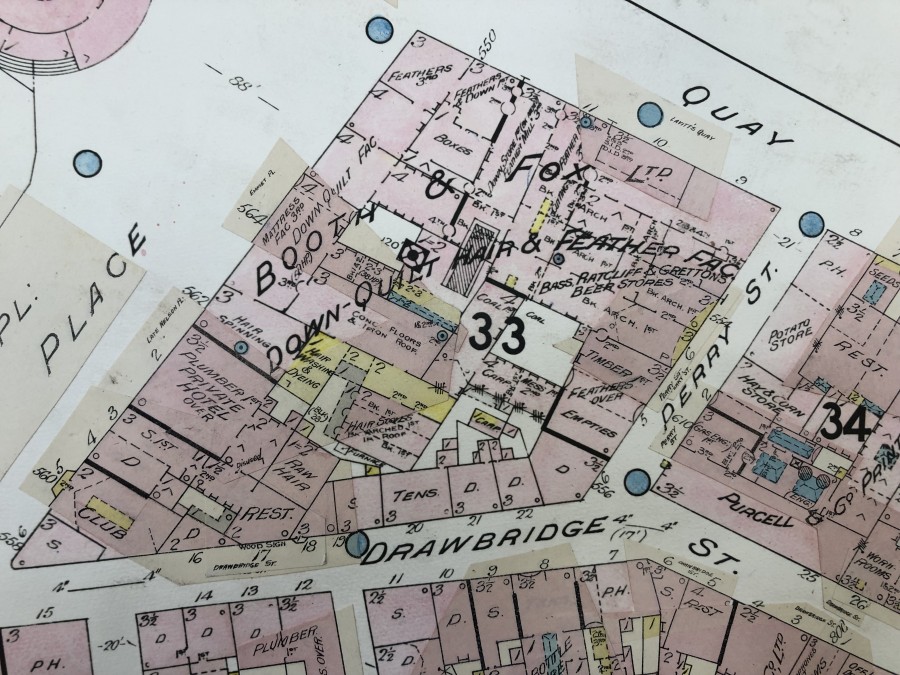

A public meeting has been scheduled for Friday 29 March 2019 in the Millennium Hall, City Hall from 11am to 1pm, the purpose of which is to share ideas on how the Decade of Centenaries 2019-2023 might be commemorated in Cork City. Cllr McCarthy noted that participation is open and all are welcome. The Lord Mayor will give an opening speech, followed by an introduction by Liam Ronayne, City Librarian, setting a historical context after which attendees will be invited to share their ideas at a workshop session”.
The agenda for the meeting is as follows; 10.45am – Light refreshments; 11.00am – Welcome by the Lord Mayor, Councillor Mick Finn 11.05am – Introduction by Liam Ronayne, City Librarian 11.15am – Breakout workshops 12.15pm – Workshop feedback 1.00pm – Conclusion/Wrap up. Please note, if you would like to share your ideas but are unable to attend the meeting, you may do so at centenaries@corkcity.ie
“For me public historical outreach is really important on Cork one hundred years ago. I have met so many people who have medals, documents and artefacts passed down from relatives from the War of Independence and the Civil War. For me I would like to see a space where people can bring these along, get some feedback on them and ultimately commemorate the sacrifices of ancestors. There is a significant amount of scholarship and books from Cork City and metropolitan area on the topics. It would be important to get such work more into the public realm, to work closely with local historians, historical societies and citizens who speak regularly about the value of learning more about such heritage”, Cllr McCarthy noted.
“The suburbs also offer some interesting perspectives. From Ballinlough, you hear about War of Independence secret gun burials/ stashes. There is the heritage of Terence McSwiney living near Cross Douglas Road. In Douglas, during the Irish Civil War the National Army prepared an attack on the city. At 2 am on a Bank Holiday Monday, Emmet Dalton and 450 soldiers of the National Army landed at Passage West, in one of the most famous surprise attacks in Irish military history – a battle which spread out into the landscape of Rochestown. In a last ditch effort by Republican forces to prevent to delay the Free State soldiers in their attempt to take Cork City, the Cork-Passage Railway bridge over Douglas Estuary was blown up by the Republicans, or Irregulars as they were otherwise known. There is a need to mark these wide range of diverse events and stories. For my part I have also gathered stories from 100 years ago, which can be viewed on my heritage website, www.corkheritage.ie”.
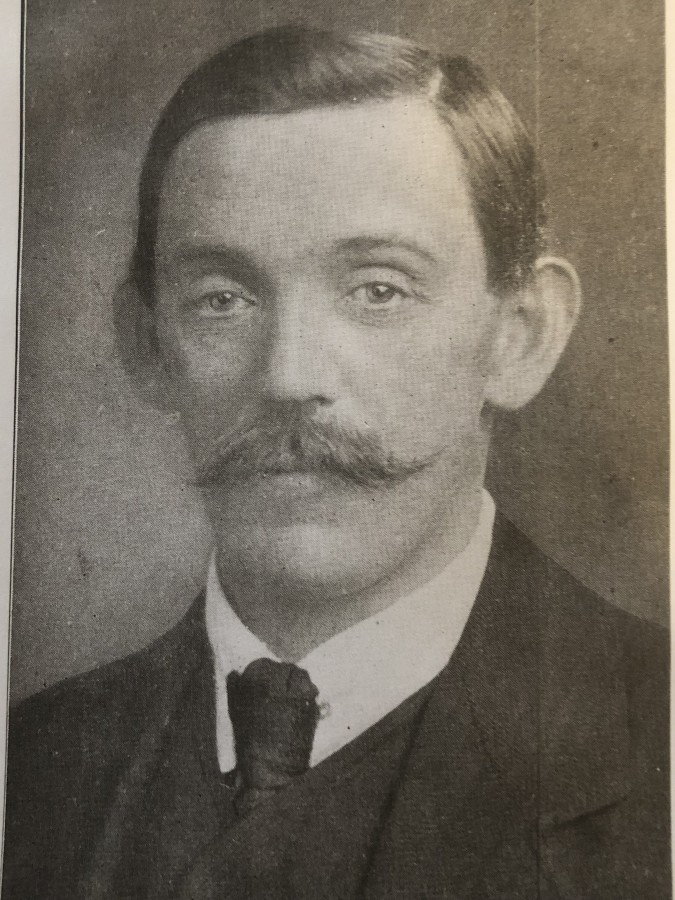
Kieran’s Our City, Our Town Article,
Cork Independent, 21 March 2019
Tales from 1919: The Fever Pitch of Politics
Mid-March 1919 coincided with support for Sinn Féin at fever pitch. In May 1918 Eamon DeValera had been re-arrested and imprisoned but in February 1919 he escaped from Lincoln Gaol, England. In April, he replaced Cathal Brugha as head of Dáil Éireann. In Cork the release of Tadgh Barry and Peadar O’Hourihane as political prisoners from British prisons led to vast public support on the streets whilst the visit of the Speaker of the new Dáil Éireann, Cathal Brugha brought a national vision to locations like the southern capital.
12 March 1919, Tadgh Barry and Peadar O’Hourihane arrived into the Glanmire Terminus (now Kent Station). Tadgh had spent ten months interned first at Usk and afterwards in Gloucester prison. Cork born he was a staff writer on the Cork Free Press (1910 to 1916) a paper which acted as a competitor to the Cork Examiner and its news stories on the Irish Parliamentary party. He later wrote for the Southern Star. Tadgh was a founding member of Sinn Féin in Cork and was a leading voice in the Cork branch of the Irish Transport and General Workers’ Union through their pamphlet Voice of Labour. He was a founding member of the Cork corps of the Irish Volunteers in 1913 and became an officer alongside Tomás MacCurtain and Sean O’Hegarty. He was interned arising out of false claims that he was involved in colluding with Germany (the German Plot) and planning another national rising.
Skibbereen native Peadar O’Hourihane, a Gaelic League activist for 17 years, had been interned in Birmingham Prison. He was a writer, poet, political activist and editor of the Southern Star. He was a staunch supporter of the Irish language and one of the founders of the Gaelic League.
On the evening of 12 March contingents of Irish Volunteers, Cumann na mBan, and Boy Scouts accompanied by five bands, marched to the terminus and escorted them to the Grand Parade where a public meeting was held. The station gates were closed with a large force of police being on duty inside the entrance. Only a number of friends of Tadgh and Peadar were allowed enter, which included Terence McSwiney. They proceeded to a wagonette in the station yard and were driven to the meeting place. Large crowds assembled along King Street (now MacCurtain Street), Bridge Street, St Patrick’s Street to a platform on the Grand Parade.
Tadgh Barry, who was enthusiastically received, said that had he had not done anything to deserve the reception given him. He congratulated Cork on the great advances it had made in the previous ten months and the news he received of the progress of the national fight in Cork made him prouder of his own rebel city. He congratulated Cork on the rescue of Donnacha McNeilus. He hoped that progress would be continued for they had a long way to go yet; “we have a big programme before us, but there is no fear of the future, and as the prison walls could not hold DeValera no more could England hold Ireland”.
Peadar O’Hourihane addressed the meeting in Irish and English. His focus was on the Irish language giving his view that the Irish language was necessary for the upbuilding of the nation and was a work of great importance for them all. In the local elections forthcoming at the time he called for as far as possible people to be selected and elected.
On 23 March 1919, Cork City Hall was filled to capacity when an address was delivered under the auspices of the Cumann Eamonn Uí Lortáin Sinn Féin by Mr Cathal Brugha, Speaker, Dáil Éireann. There was also a short musical concert at which the Irish Volunteer Pipers’ Band participated with range of local singers. Amongst those on the City Hall platform was Tomás MacCurtain who presided as well as Bishop Cohalan, Rev Father Cahalane St Finbarr’s West, Professor Stockley, Captain Collins, Thomas Dowdall, Terence McSwiney, Alderman Meade and Tadgh Barry.
Mr Brugha speaking in Irish said that although he was often in Cork that it was the first time addressing an audience in Cork City. He opened his speech commenting on the Irish language and calling for a concerted effort to save Irish in the Irish-speaking districts. “The language is the heart of the nation”; he noted. The future of Ireland, he detailed, was “dependent on the Peace Conference and American President Wilson’s call on the rights of small nations”.
Mr Brugha’s principal pitch at the meeting was the encouragement of Irish citizens to invest in the form of a new Irish Stock Exchange that Dáil Éireann wished to champion. In 1919 he noted no small Irish industries were quoted on the English Stock Exchange and that this “discouraged people making investments for they had difficulty in realising the value of their money as the industry was not quoted”. They intended to make use of the millions of money lying on deposit in Irish banks. Most of the money was invested out of Ireland. They had worked out a scheme to make use of the millions of pounds on deposit in Irish banks. They would ask the people to allow them the use of the money to invest. They would try to make a bargain with one of the banks and if they could not, they would start a bank of their own. When they got the use of the money they would give it out to “some competent people of good character” who would undertake to run or start Irish industries in the country.
Kieran is also showcasing some of the older column series on the River Lee on his heritage facebook page at the moment, Cork Our City, Our Town.
Captions:
989a. Tadgh Barry, c.1919 (source: Cork City Museum)
989b. Cathal Brugha, c.1919 (source: Cork City Library)

A public meeting has been scheduled for Friday 29th March 2019 in the Millennium Hall, City Hall from 11am to 1pm, the purpose of which is to share ideas on how the Decade of Centenaries 2019-2023 might be commemorated in Cork City.
Participation is open and all are welcome.
The Lord Mayor will give an opening address, followed by an introduction by Liam Ronayne, City Librarian, after which attendees will be invited to share their ideas at a workshop session.
The agenda for the meeting is as follows;
10.45am – Light refreshments 11.00am – Welcome by the Lord Mayor, Councillor Mick Finn 11.05am – Introduction by Liam Ronayne, City Librarian 11.15am – Breakout workshops 12.15pm – Workshop feedback 1.00pm – Conclusion/Wrap up
Please note, if you would like to share your ideas but are unable to attend the meeting, you may do so at centenaries@corkcity.ie
Pictures I took from the viewing stand this year; thanks to Cork City Council for organising and to all the community groups for their great colour and pageantry. More pictures are on my heritage facebook page, Cork Our City, Our Town.
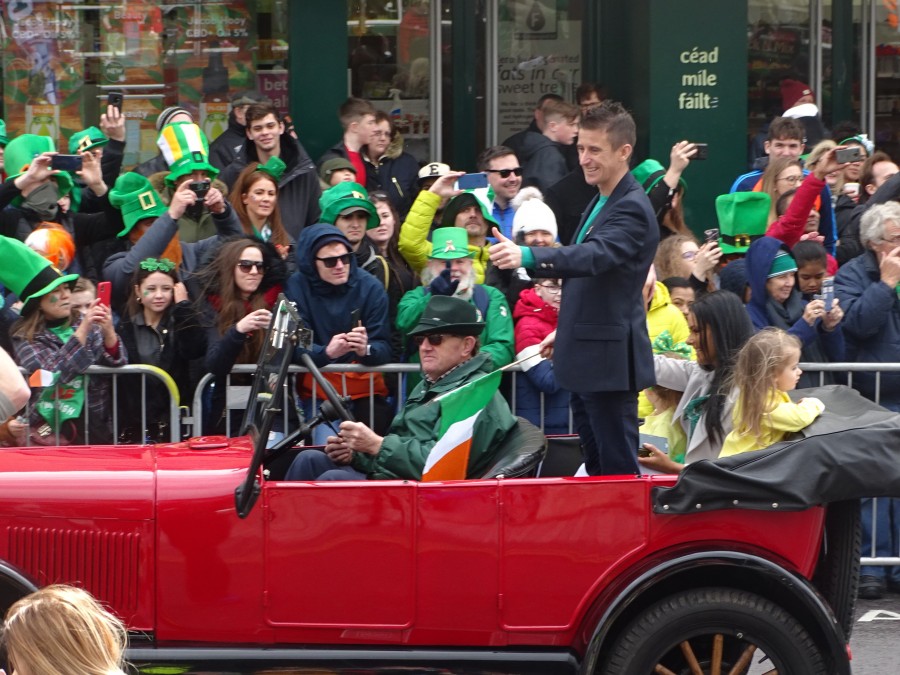
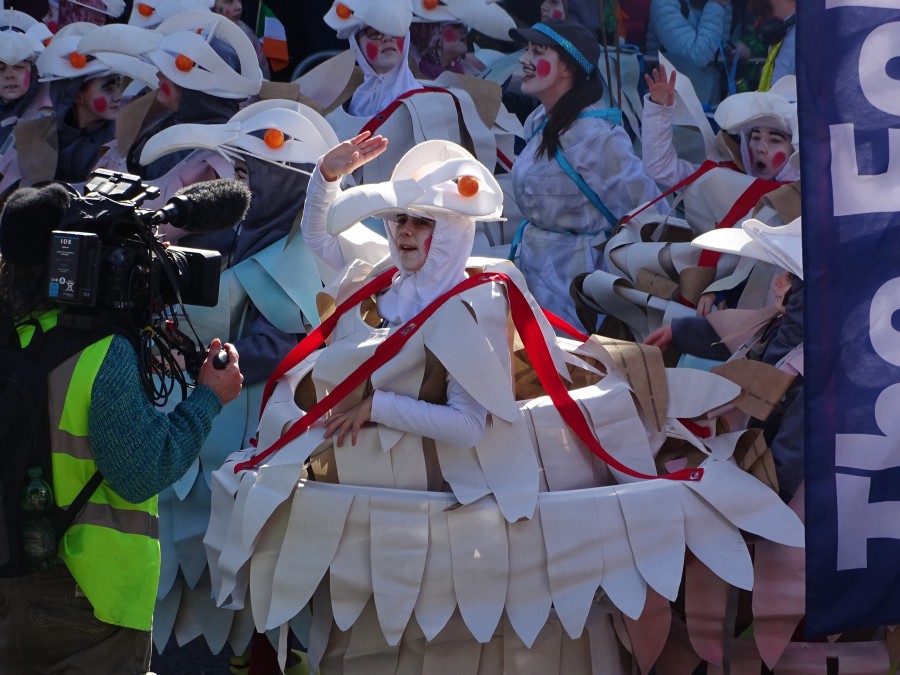
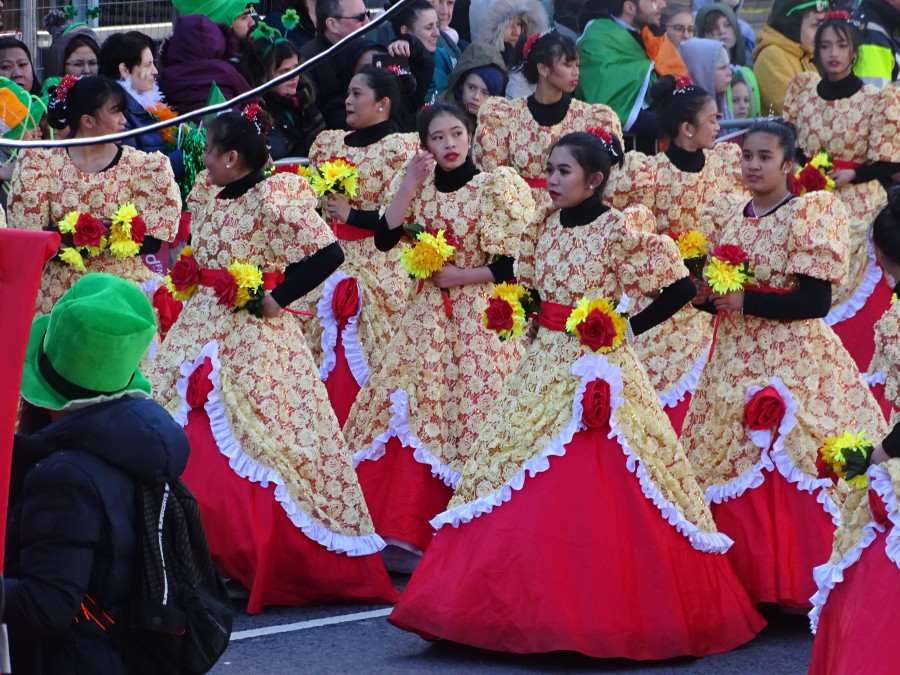
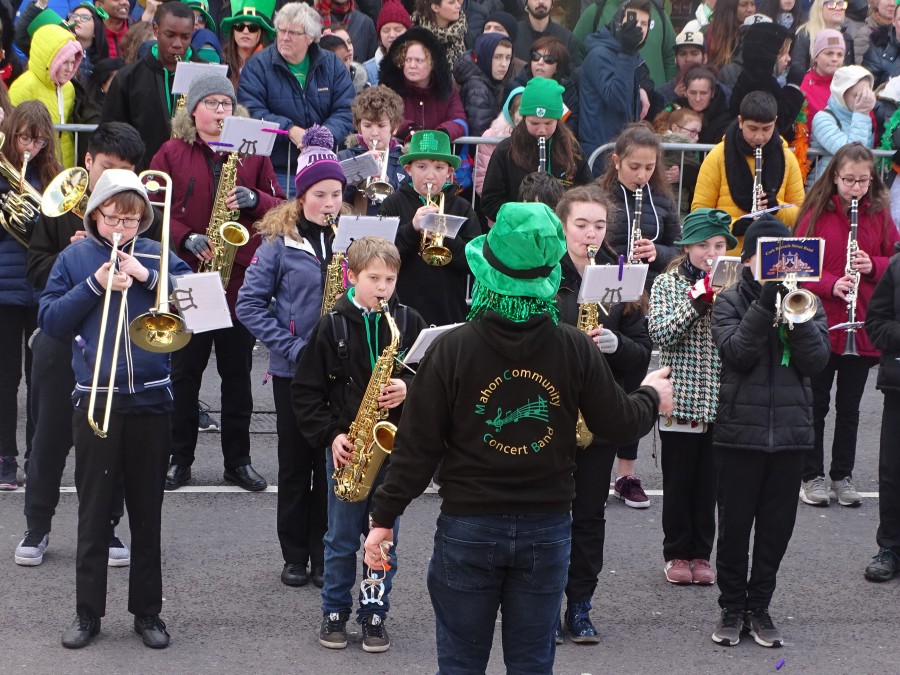
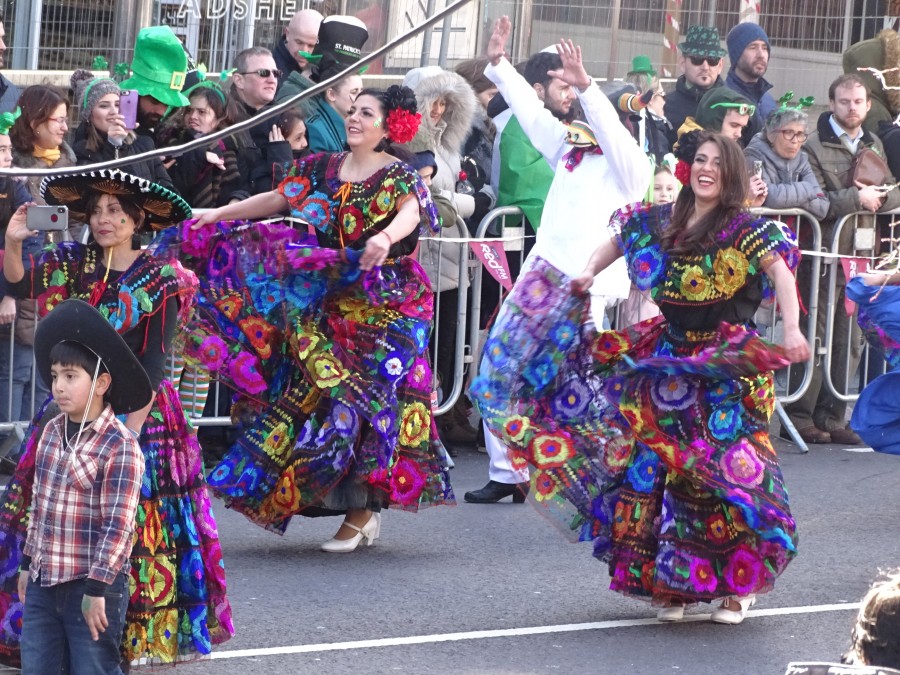
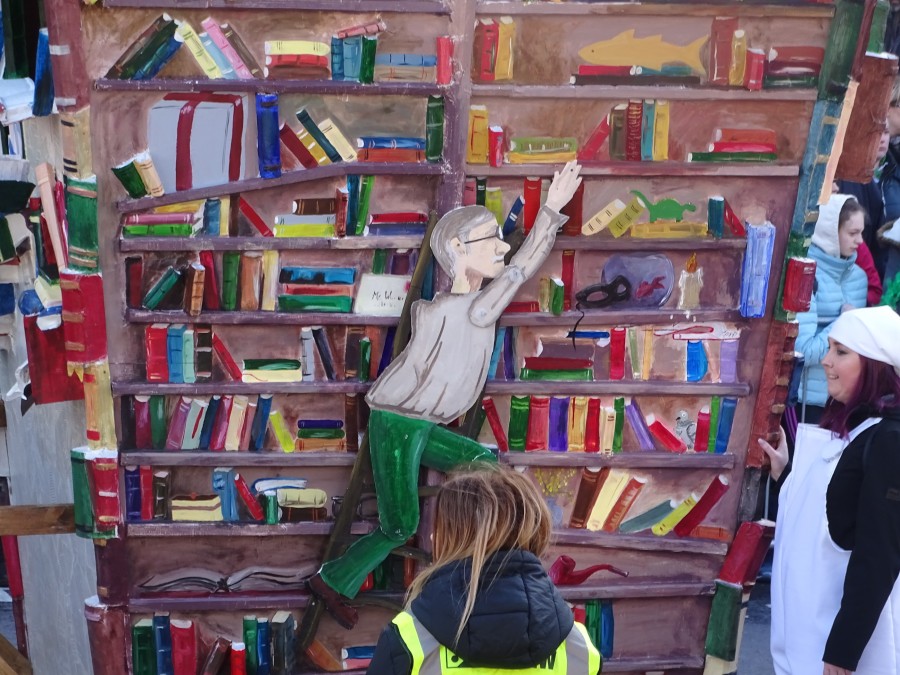
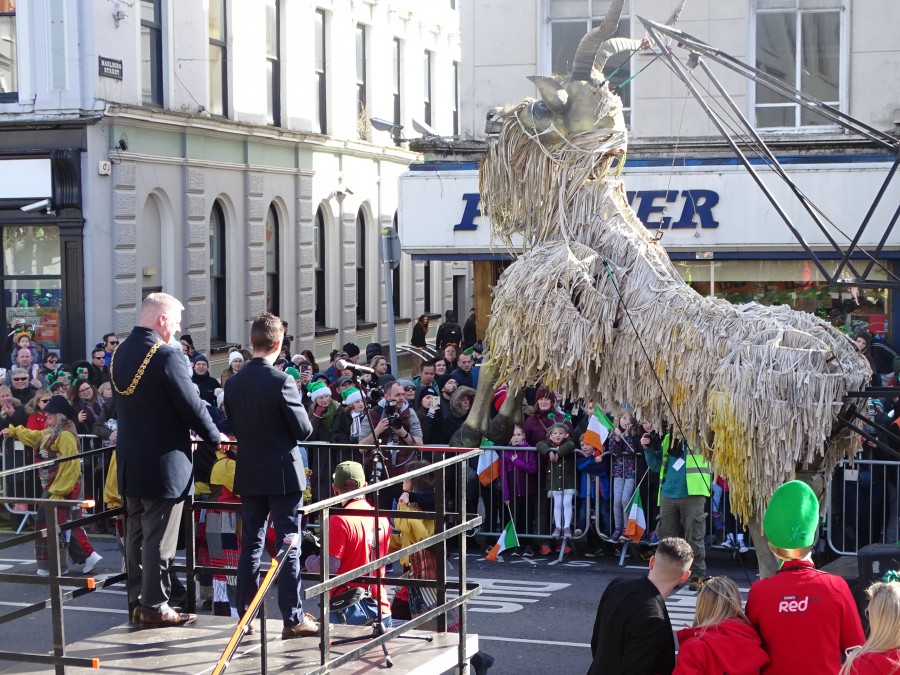
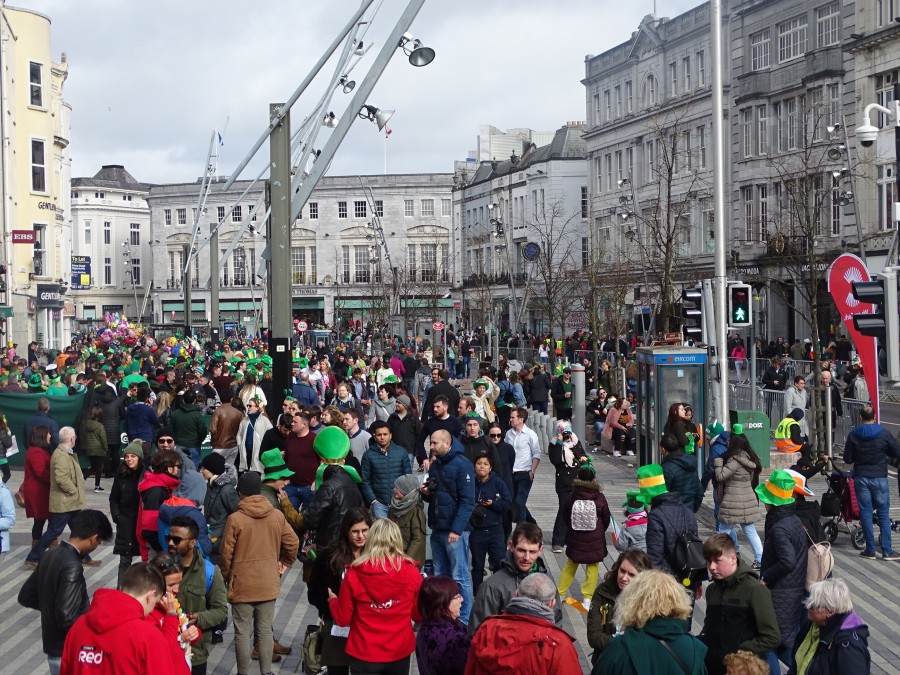
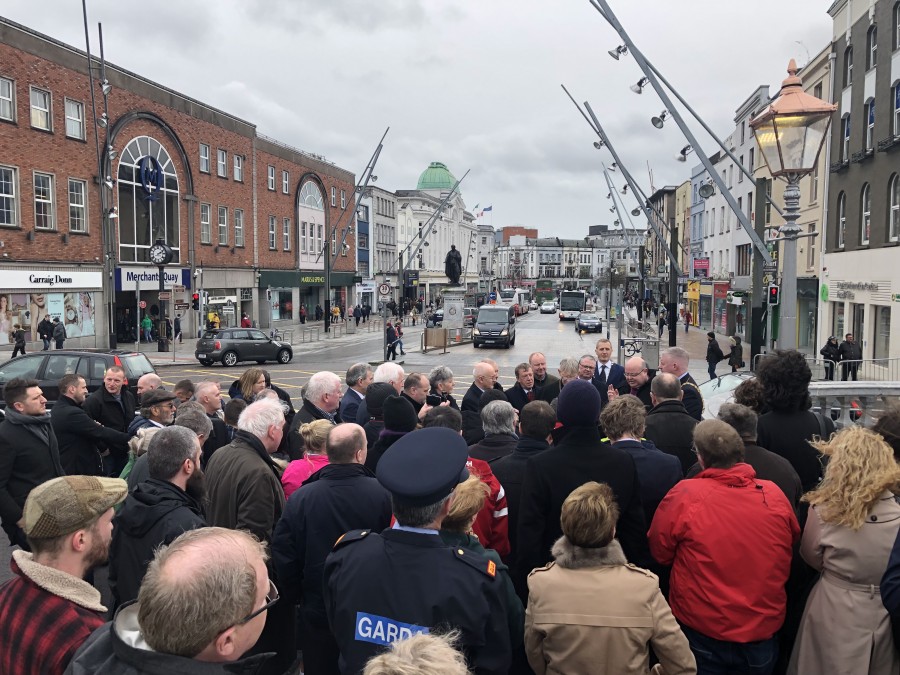
This week marks another chapter in the history of the illustrious St Patrick’s bridge as it re-opens after re-furbishment. It has had a rocky history. The thread below shares some of the interesting.
Demand: By the middle of the 18th Century demand for bridge access to the developing St Patrick’s Hill area was strongly called for. When first proposed opposition reigned in the city, especially the businessmen near the proposed site and the ferry boats that operated the River Lee. Their petition to the council was turned down and in 1786, the go-ahead for the raising of money for the project was given.
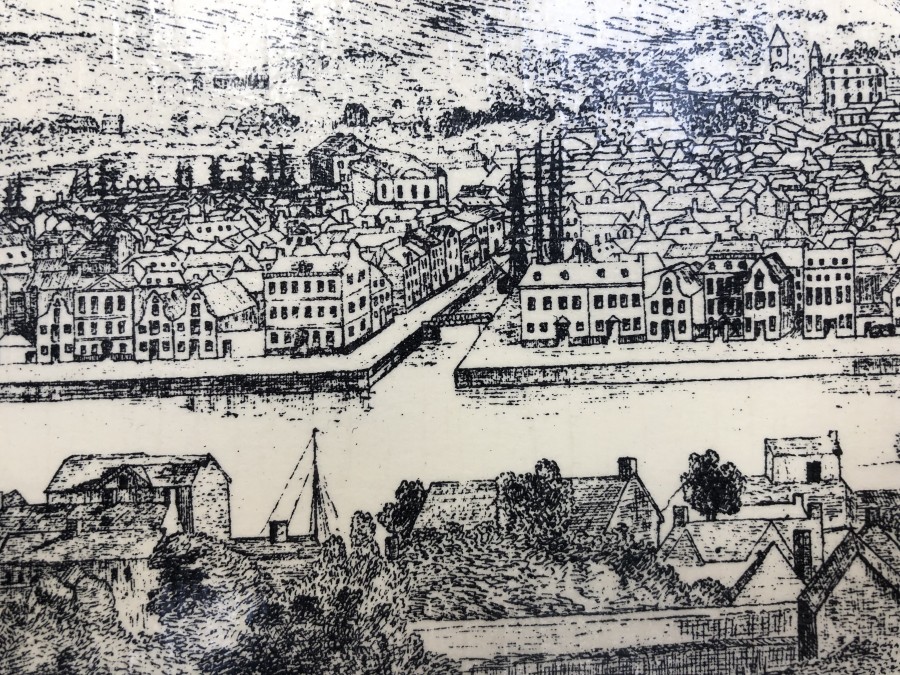
Tolls: Funding a new bridge was difficult so the Corporation of the city that loans would have to be taken out and would have to be paid back with interest. However the loan or the £1000 contribution from the council was not enough to pay back the financial institution plus interest that loaned the money. So it was decided to place tolls on the proposed bridge and to abolish them 21 years later.
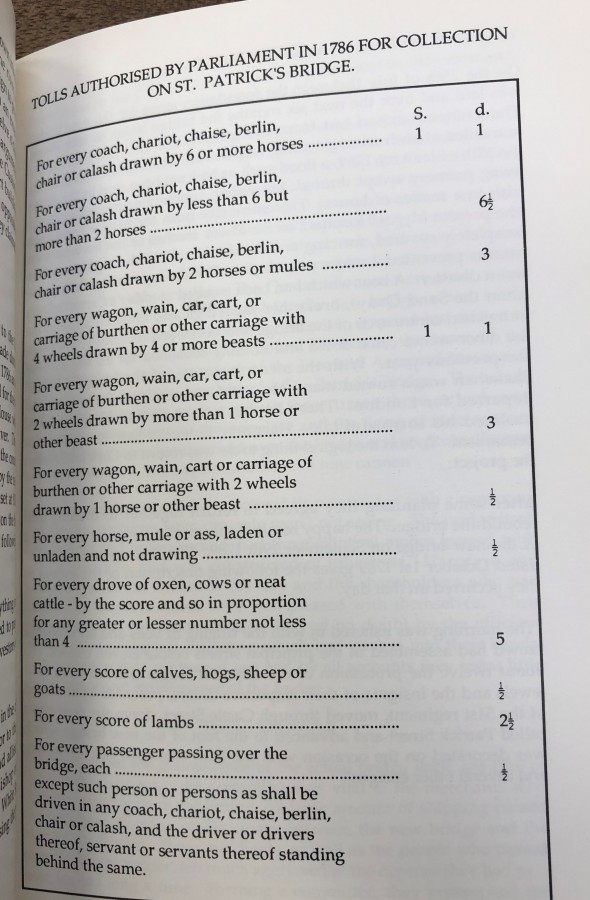
New Bridge: Mr. Michael Shanahan was chosen to be the architect and chief contractor of the operation. From 1788, he set about planning the project and on 25 July of that year, the foundation stone was laid. It took a half a year to nearly complete the whole job. The people of the city were astounded at the progress of the new bridge.
Unfortunately on 17 January 1789, disaster occurred as a flood swept through the Lee Valley. A boat tied up at Carroll’s Quay (then Sands Quay) broke lose and crashed against the uncompleted centre arch i.e. the keystone and destroyed it. Devastated Michael Shanahan set off to London to find new prospects. He was encouraged to come back and the bridge was rebuilt & christened on 29 September 1789.
Depiction: For over two centuries, Cork’s Crawford Art Gallery has also minded & displayed landscape views of the city-the 2nd painting is by Mr T S Roberts who also shows how important the bridge’s location was & in the background the Navigation Wall now part of Cork’s Marina Walk.
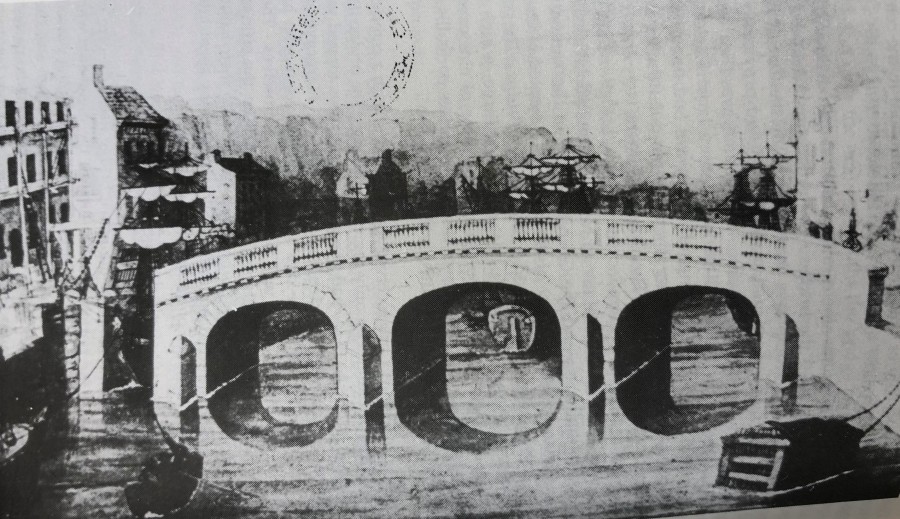

Documentation: There are several old City maps, historical articles on the bridge’s history and two books on the bridges of Cork by local historian Antoin O’Callaghan – all available to consult in local studies in Cork City Library.
Flood of 1853: In November 1853, disaster happened again when St. Patrick’s Bridge was swept away by flood. This was due to a build up of pressure at North Gate Bridge which was the only structure to remain standing whilst the flood swept over the city centre claiming several lives and destroying everything in its path.

Benson’s Design: There was much controversary over the proposed new & ultimately present day bridge, mainly because of the type of bridge to be built i.e. either stone, iron and even timber. Architect John Benson was to be the architect and he chose Joshua Hargrave, the grandson of the Hargrave that worked on the first bridge and other contractors to build the structure. In November 1859, the new St Patrick’s Bridge its foundation stone ceremony.
Disaster struck again when the bridge had to be reconstructed due to a ship which struck it. It was reconstructed again and was opened on 12 December 1861 for public traffic. From here on the Bridge remained the same and it still spans over the rushing waters of the River Lee.
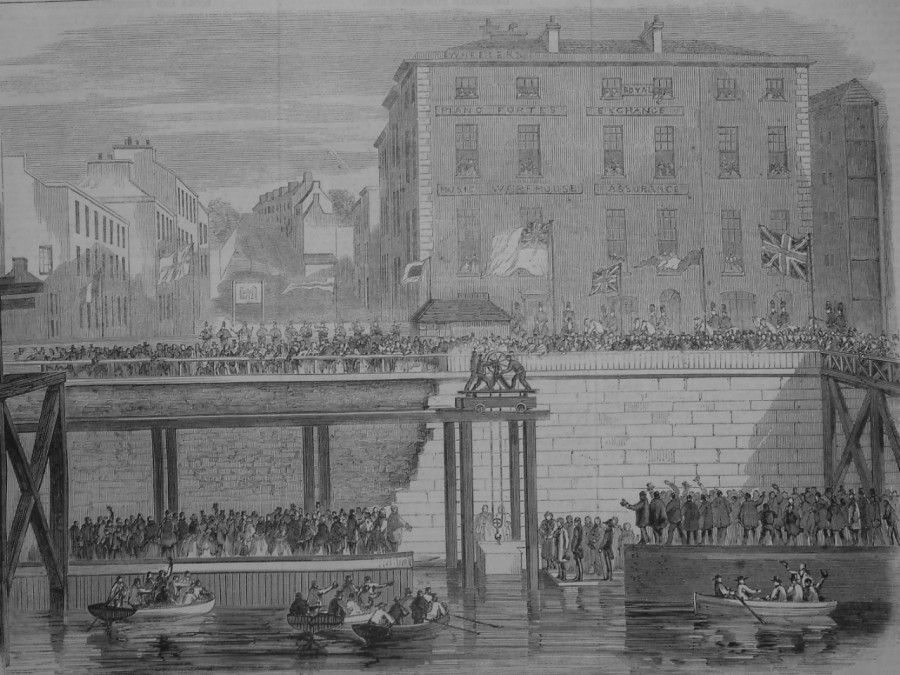
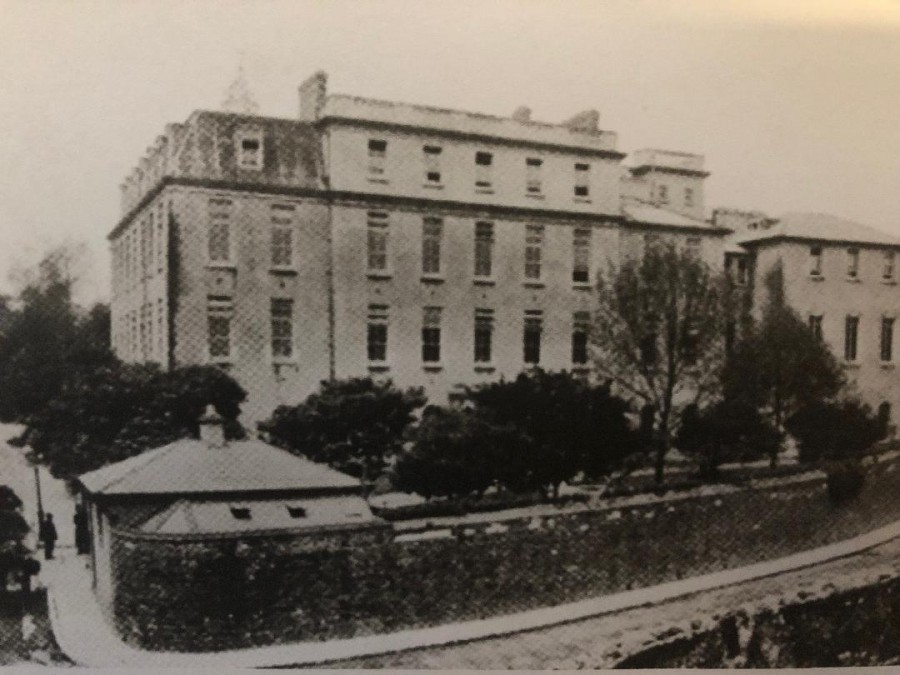
Kieran’s Our City, Our Town Article,
Cork Independent, 14 March 2019
Tales from 1919: The Work of the North Infirmary
In 1919, the work of the North Infirmary appears regularly in Cork newspapers. One hundred years ago, 14 March 1919, a public meeting of Cork citizens was held at the Council Chamber, City Hall. Hosted by the Lord Mayor Cllr William F O’Connor, the meeting sought to perpetuate the memory of a well-respected young Cork Doctor, John Higgins, who had passed away from influenza. He had gained his MB degree with first class honours at UCC and was awarded first place in Ireland in several of his subjects. At his funeral the Cork Examiner reported that his cortege from the North Infirmary to St Finbarr’s Cemetery was extensive and there was a large public outpouring of grief.
Dr John Higgins was also remembered at the monthly meeting of March 1919 and at an annual meeting on 6 May 1919 of the Committee of Management in the boardroom of the North Infirmary (now the Maldron Hotel in Shandon). At the May meeting it was noted that the wave of influenza, which had spread over the country had fatal results or had left many patients very sick and frail. It was detailed that every effort had being made to preserve John’s life, which was watched over by his professional colleagues and by the Sisters of Charity.
An extensive annual report of the activities of the North Infirmary (est. 1719) appears in the Cork Examiner on 6 May 1919, which provides insights into staff, public demand, hospital space and financial debt. The City High Sheriff Mr W J O’Sullivan and subsequently the Lord Mayor, presided. The Infirmary opened the year’s work of the hospital with 68 beds, occupied by intern patients, consisting of 57 surgical and 11 medical cases. There were 1,054 surgical and 291 medical patients received during the year. Of this large number, 1,033 patients were discharged, cured or relieved, and 252 of the latter were positively treated. During the year, there were deaths of 35 surgical and 30 medical patients. A large number of patients from distant parts of the county were treated by the surgeon. As an addition to the main building (opened in 1836 with its wings opening in 1893) a new dental hospital had been opened. In another portion of the new building patients were treated for diseases of the eye, ear, throat, and nose. This department, under Doctor J H Horgan, was deemed much sought after. Owing to the war and other causes, the Rontgen Ray Department has not yet been formally opened, although it was being used for some infirmary purposes.
Reference in the annual report is made to the resignation of Mother Josephine Murphy due to sickness. For many years, she was the Superioress of the Sisters of Charity of St Vincent de Paul, who had charge of the patients and the domestic working of the North Infirmary. Superioress Mother Angela McNally was appointed to the role. The Sisters continued their charge they took up over fifty years previously. In the various wards the full complement was fourteen Sisters. Joining them were two staff nurses and a large number of probationers from Cork’s nursing school.
The annual report of the Dental Hospital division for the year 1918 outlined that people feared influenza and were afraid to congregate in buildings. The curtailed train service hindered access to Cork City as well as the increased cost of all dental materials. Despite these issues, 293 patients underwent dental operations under general anaesthesia with 262 operations of a minor nature were performed under local anaesthetics. There were 1,287 ordinary extractions, 233 sets of artificial teeth, 65 repairs, 28 gold inlays, 18 crowns, 25 cases of root treatment, with 1,156 consultations.
Discharged soldiers and sailors continued to be treated in the special ward set aside for them. The larger number reaching Cork were treated at the Military Hospital at Victoria Barracks. Special treatment was given to enable them to take up civil work again.
The sub section of the report on the Eye, Throat, Nose and Ear Department described that with the exception of the period during which the influenza epidemic was prevalent in the city, the Ophthalmic and Laryngological Department of the Hospital continued to be very largely availed of by the poor of the city and county during the previous year. There were many children attending the clinic. This the report reflected that the parents of impoverished children were beginning to realise more and more that the early and expert treatment of defects of the eyes, the ears and the breathing passages was the “best and only safeguard against the permanent injury of the organs”. Over 2,000 new cases visited the extern division of this department during the year, and the total attendances were nearly three times that number. Nearly 300 surgical operations – many of a serious character – were performed under general anaesthesia, and approximately 150 operations were performed under local anaesthesia.
The finances were in a difficult state. The Treasurer’s report showed a debit balance on the year’s work of just over £1,185 and attention was drawn to the increased cost of coal, totalling £117, to a decrease in subscriptions (the total of which only amounted to over £400, which was deemed a very small sum from the city and county). War, influenza, increasing demands of patients wages and the increased cost of maintenance of the buildings also drove costs up. Discussion took place on increasing public subscriptions and asking for state aid with motions taken from those present at the annual meeting to write to Westminster expressing concerns and demands.
Kieran is also showcasing some of the older column series on the River Lee on his heritage facebook page at the moment, Cork Our City, Our Town.
Captions:
988a. North Infirmary, Cork 1914 (source: Cork City Library)
988b. Maldron Hotel, former site of North Infirmary, Cork, present day (source: Kieran McCarthy)
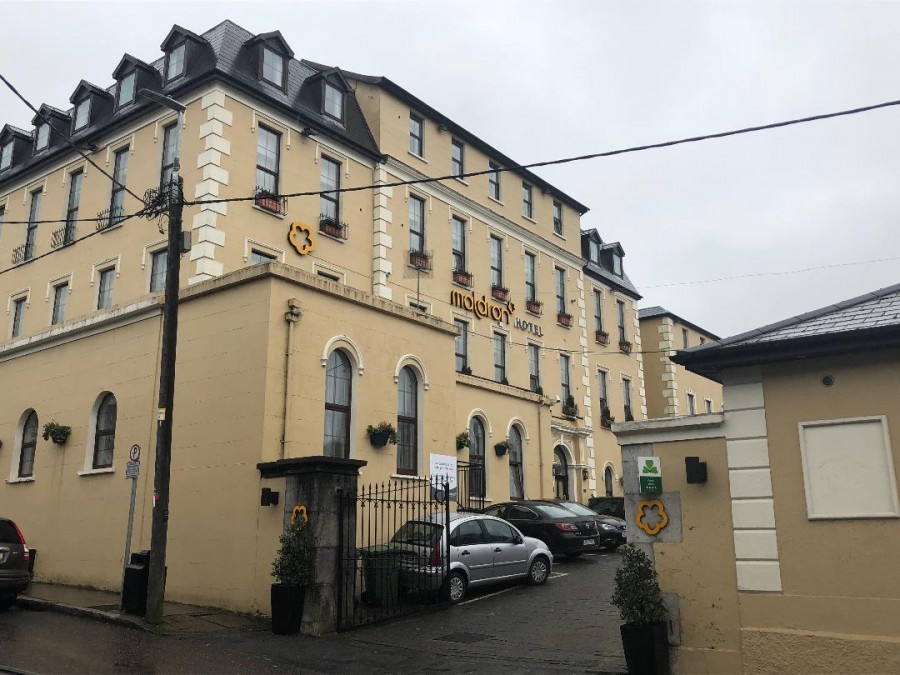
Local historian Cllr Kieran McCarthy has announced that the date for the Cork City schools’ award ceremony of the Discover Cork Schools’ Heritage Project is Wednesday 13 March (6.45pm, Concert Hall, City Hall). A total of 18 schools in Cork City took part in the 2019 Discover Cork: Schools’ Heritage Project, which included Schools in Ballinlough, Ballintemple, Beaumont and Douglas. Circa 750 students participated in the process with approx 170 projects books submitted on all aspects of Cork’s local history & heritage.
The Discover Cork Schools’ Heritage Project is in its sixteenth year and is a youth platform for students to do research and offer their opinions on important decisions being made on their heritage in their locality and how they affect the lives of people locally. The aim of the project is to allow students to explore, investigate and debate their local heritage in a constructive, active and fun way.
Co-ordinator and founder of the project, Cllr Kieran McCarthy noted that: “The project is about developing new skill sets within young people in thinking about, understanding, appreciating and making relevant in today’s society the role of our heritage – our landmarks, our stories, our landscapes in our modern world. The project also focuses on motivating and inspiring young people, giving them an opportunity to develop leadership and self development skills, which are very important in the world we live in today”.
The City Edition of the Project is funded by Cork City Council with further sponsorship offered by Learnit Lego Education, Cllr Kieran McCarthy, Lifetime Lab and Sean Kelly of Lucky Meadows Equestrian Centre. Full results for the City edition are online on Cllr McCarthy’s heritage website, Cork Heritage

Kieran’s Our City, Our Town Article,
Cork Independent, 7 March 2019
Tales from 1919: The Temperance Movement
The celebration of the new St Francis Total Abstinence Hall at 20 Sheares Street was marked at the annual meeting of the society on Saturday 1 March 1919. The newly elected Lord Mayor of Cork Mr William O’Connor was in the chair. William was a native of Cork. He received his early education at the Presentation Brothers’ College, and obtained his MA degree at UCC, later qualifying as a solicitor. He was appointed Cork High Sheriff in 1917 and was elected Lord Mayor a year later. A keen golfer, he was for some time Captain of Muskerry Club. During his mayoralty, he associated himself with the cause of temperance and total abstinence from intoxicating drink.
The Rev President Fr Francis spoke after the Lord Mayor and detailed that the furnishing was almost complete with three full-sized billiard tables, reading room, library, card-room, committee-room, a special room for boys, besides a large space behind on which a concert hall was built. He outlined the rising numbers of the society; “the soul of the place are the members and these number several hundred, which number will be doubled when the hall is fully finished”. Circa 4,000 members are highlighted in the speeches. The Rev President Fr Francis also spoke about statistics published in 1919 which reveal that £18,397, 518 was spent on alcohol by the public, which was up from circa £12m in 1913.
The St Francis Total Abstinence Society was founded circa 1900. Based initially on Fr Mathew Street, it hosted sermons and talks by the Capuchin order. Documentation from its early years is hazy and scarce. The Society possibly co-utilised the Capuchin recreational space for the Fr Mathew Temperance Campaign. On 30 January 1907, the early Fr Mathew hall was opened in what was then Queen Street. There was a good auditorium for plays and concerts and plenty of rooms for activities such as a billiard room, a card room, a reading room.
For the St Francis Total Abstinence Society talk of needing a premises accelerated in the 1910s. Charity events were organised. For example, in February 1917 fundraising concerts were held at Cork City Hall where the Cork School of Music Choral Society under the conductorship of Professor Theo Gmur were heard as well as music by Professor J C Shanahan. Cork Corporation gave the space for free. Advertisements in the Cork Examiner August 1917 records outings to Crosshaven by train, whereby lunch was served near Church Bay, followed by football matches and sports activities. The Greenmount Band provided the music on the outings. The site chosen for their new hall was the former Irish Volunteer hall on Sheares Street. The St Francis Hall continued as a dance hall venue for several decades after.
The St Francis Total Abstinence Society was also part of a wider renewal in temperance activity across Ireland. Previously in 1838 Fr Theobald Mathew established his Temperance campaign and within a decade enrolled three million people, or more than half of the adult population of Ireland. By 1898 though, over sixty years after the Fr Mathew campaign the influence of the pioneer movement had waned. In 1898 Fr James Aloysius Cullen initiated the Pioneer Total Abstinence Association in Dublin, which created branches of its association and inspired solo societies.
Guy’s Directory of Cork City and County lists nine temperance societies in the city – Apart from St Francis Total Abstinence Society there was also the Church of Ireland Temperance Society, Cork Women’s Christian Temperance, the Pioneer Division No 790 of the Ancient Order of Hibernians Total Abstinence Benefit Society (based at Hibernian Hall, Morrisons Island), St Mary’s Hall (North Cathedral Parish), St Vincent’s Hall for Girls (St Mary’s Road), the Third Order of St Francis Hall (Grattan Street), Fr O’Leary Total Abstinence Hall (Bandon Road), Fr Mathew Total Abstinence Hall (Queen Street). There were also temperance halls in Rochestown, Blarney, Bantry, Buttevant, Doneraile, Kinsale, Skibbereen and Youghal.
The Fr O’Leary Hall on Bandon Road hosted a prominent temperance campaign. As curate in the Lough parish between 1890 and 1915, Fr Patrick O’Leary took a leading part in the Temperance movement. Whilst serving in the Lough parish he began the study of the Irish language and in a short time he became a fluent Irish speaker. He wrote several Irish text books, and the one by which he was best known was Ceacta Beag, a book which was widely used in schools throughout the country.
Opening on 10 October 1900, the Bandon Road hall was initially named St Finbarr’s Working Men’s Temperance Club and was based on principles of the The League of the Cross, which was a Roman Catholic Total Abstinence confraternity. Established in London in 1873 by Cardinal Henry Manning, its aim was to unite Catholics, both clergy and laity, against intemperance. The hall was designed by James McMullen and built by the contractor Alderman Edward Fitzgerald. The body of the hall was rectangular with a raised platform at one end, suitable for the holding of concerts and events. It was divided into three apartments, separated by glass partitions and arranged so that the three could be merged into one room if it were found necessary. There was an additional spacious gallery, in which was situated the billiard-room and the library. The rooms on the ground floor were intended for reading rooms and general recreation rooms.
Kieran is also showcasing some of the older column series on the River Lee on his heritage facebook page at the moment, Cork Our City, Our Town.
Captions:
987a. Irish Volunteer Hall which transformed in St Francis Hall, 20 Sheares Street (picture: Kieran McCarthy)
987b. Former O’Leary Hall, Bandon Road, present day (picture: Kieran McCarthy)
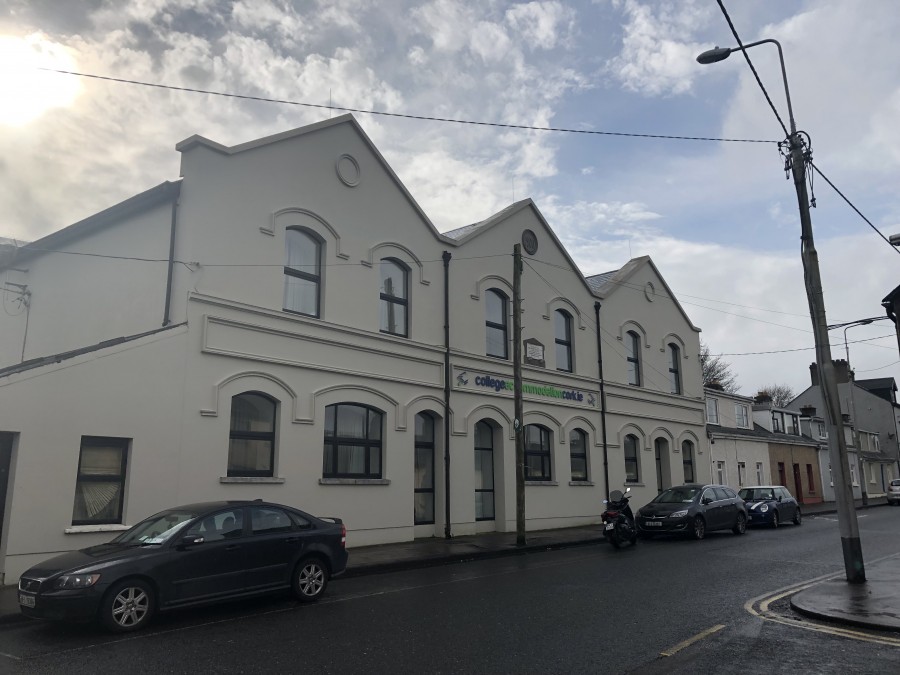
Press Release:
Independent Cllr Kieran McCarthy has praised the work of the franchise teams at both Cork City Council and Cork County Council and their respective Director of Services for their trojan work in identifying electors to be transferred into the new city. A total of 62,567 voters will see their vote transfer from Cork County Council to Cork City Council in this May’s local elections.
The Final Register of Electors 2019/2020 has been published for the extended city of Cork. The total number of electors on the Register for the extended city is now 148,780 due to the city’s boundary extension which is due to come into force the month after the local and European elections. Over 15,000 people in the Douglas, Donnybrook Hill, Maryborough Hill, Mount Oval and Rochestown areas have been transferred.
Cllr McCarthy has noted that there may yet be people who are not correctly identified on the register. “I am encouraging all voters to please check their details online at checktheregister.ie or by contacting City Hall”. Members of the public can check their details online by using checktheregister.ie website. They can also contact the Register of Electors office, Cork City Council, City Hall, Cork at 4924107 or e-mail franchise@corkcity.ie”
“If they are not on the current register or have changed an address you can apply to be included in the Supplement by completing RFA2/RFA3 application forms which are available on the website – checktheregister.ie –application forms”.
“The councils’ franchise teams, which oversee voting protocol, not only had to identify the electors in the newly extended areas but they also had to re-configure the local electoral areas as the city is moving from six electoral areas to five local electoral areas. This is a very complex body of work,” Cllr McCarthy noted.























